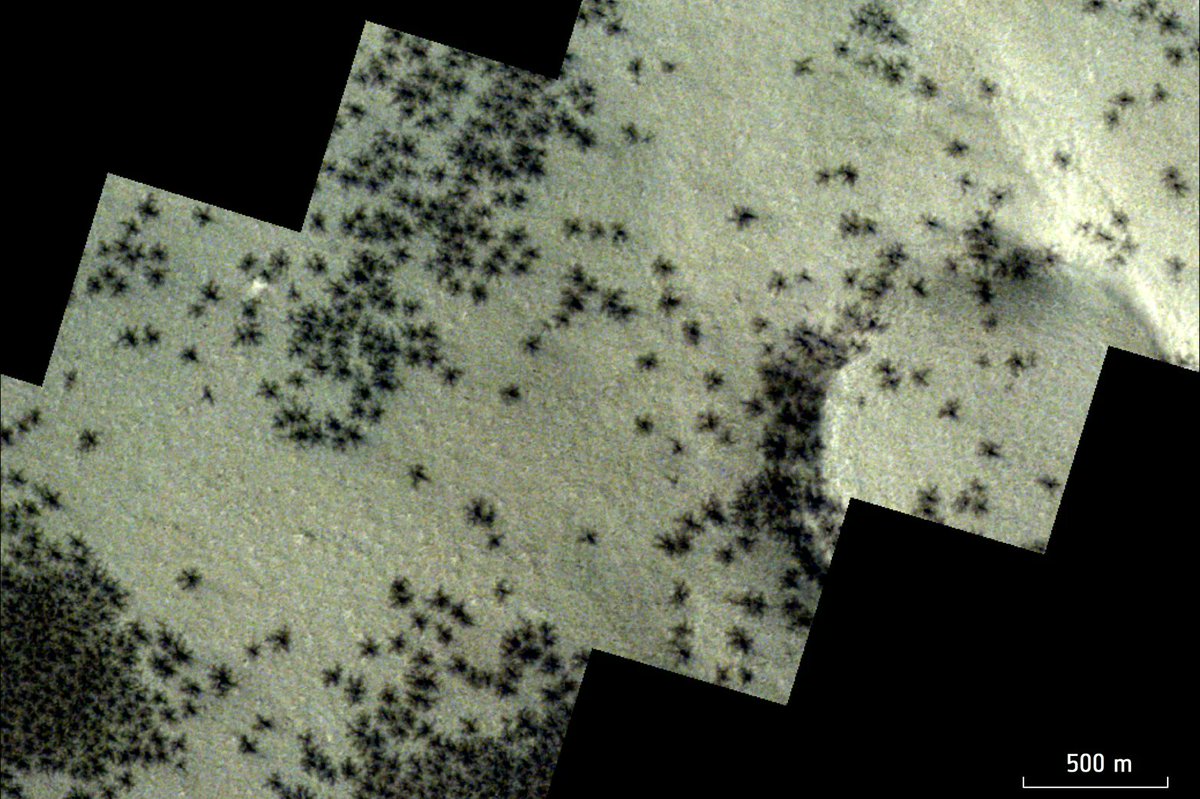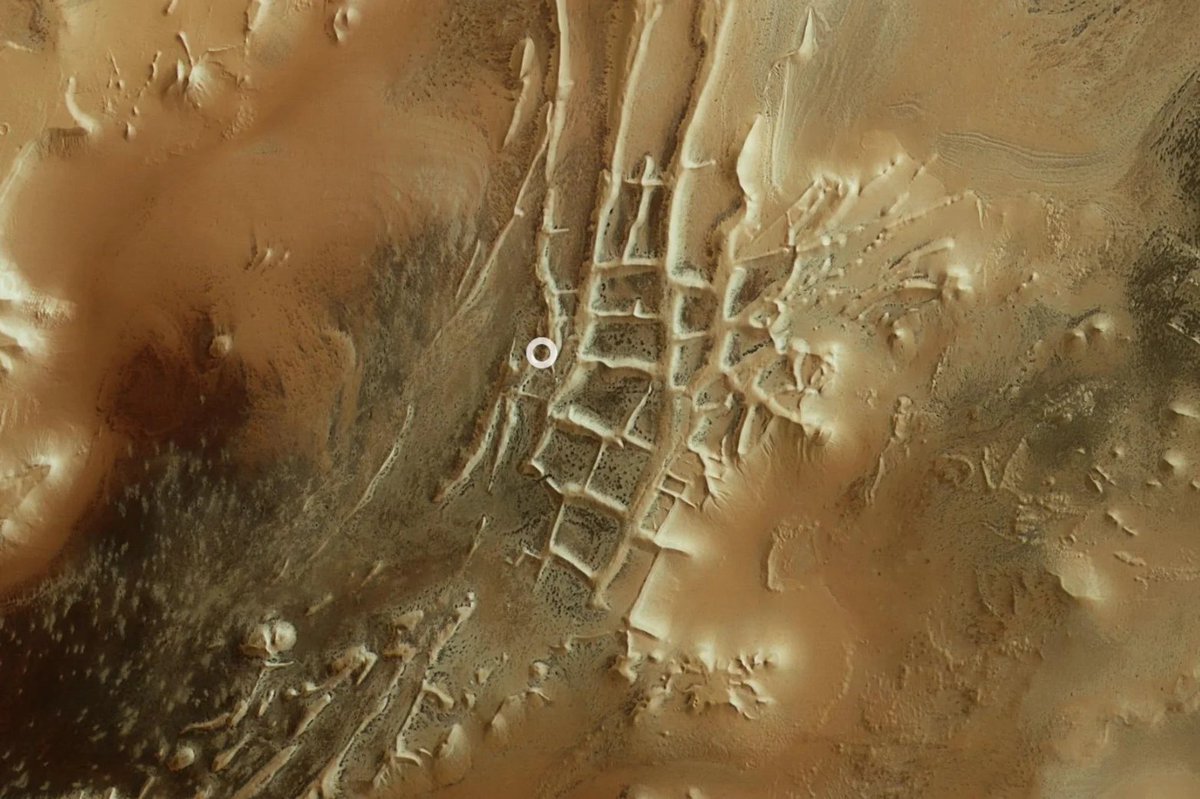The idea of a Mars covered in giant spiders may sound like the premise of a science fiction movie, but recent images from the European Space Agency (ESA) depict a scene eerily reminiscent of this concept.

Satellite Images Reveal Spidery Patterns
In February, satellite images captured by the ESA showed dark, spider-like formations sprawling across an area of Mars known as Inca City, located in the planet’s southern polar region. These formations appear to have leg-like structures and are clustered together in large groups.
The Truth Behind the Alarming Visuals
Despite their sinister appearance, these formations are not alien creatures but are rather channels formed by erupting carbon dioxide gas. This natural phenomenon occurs when the southern hemisphere of Mars begins to warm during the Martian spring, causing the subterranean carbon dioxide ice to sublimate (turn from solid to gas).

How the Spidery Patterns Form
The warming temperatures lead to the expansion and rising of this gas, which eventually bursts through the overlying ice layers. The force of these explosions ejects dark Martian dust upwards, which then resettles onto the ice, creating the spidery patterns observed in the photographs.
Inca City: A Geological Wonder
Inca City, also known as Angustus Labyrinthus, was initially thought to resemble ancient ruins, with its sharply defined ridgelines suggesting petrified sand dunes or remnants of Martian glaciers. However, a 2002 study by the Mars Orbiter space probe revealed that this “city” is part of a larger circular structure approximately 86 km (53 miles) wide, likely an ancient impact crater. The distinctive geometric ridges are believed to be magma intrusions, formed when magma rose through Mars’s crust following an impact by a space rock.

